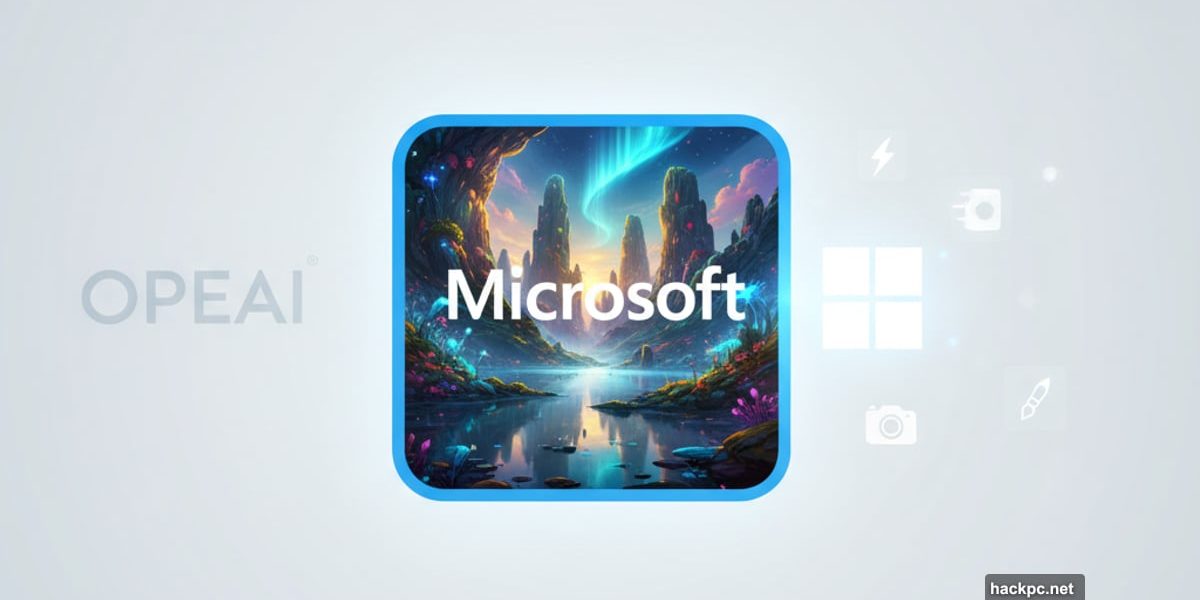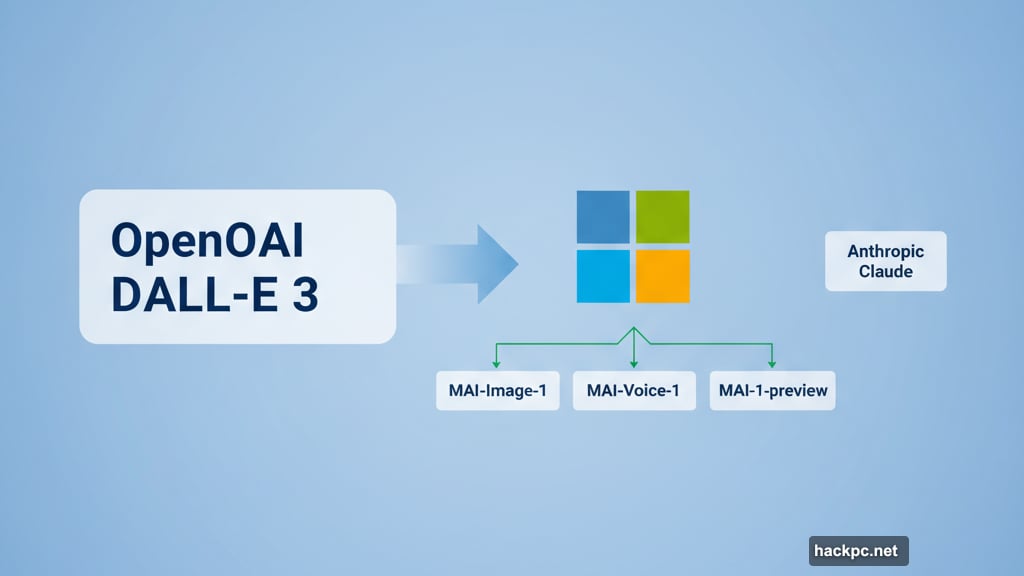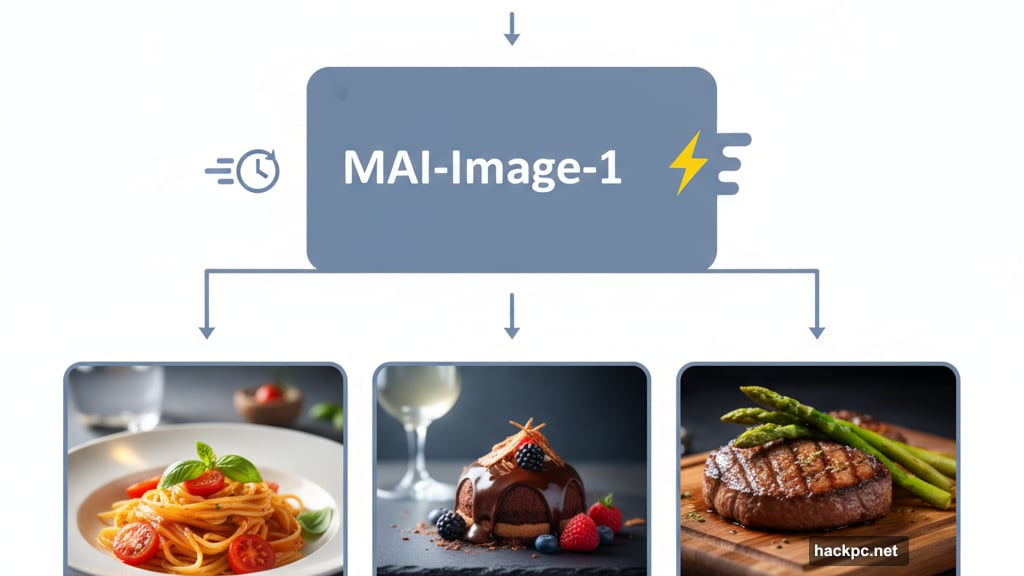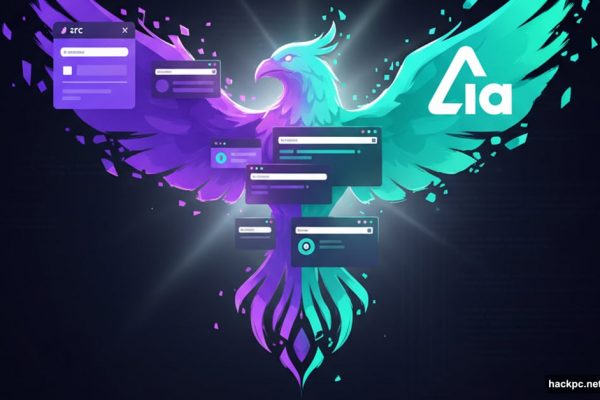
Microsoft stopped waiting for OpenAI. The tech giant released MAI-Image-1, its first homegrown AI image generator, marking a significant shift in how the company approaches AI development.
The new model landed in Bing Image Creator and Copilot Audio Expressions this week. But European users will have to wait. Microsoft AI chief Mustafa Suleyman confirmed the EU launch is “coming soon” without specifying a timeline.
This release signals something bigger than just another image generator. Microsoft is diversifying away from its heavy reliance on OpenAI’s technology. Smart move, considering the competitive landscape.
What Makes MAI-Image-1 Different
Microsoft designed MAI-Image-1 for speed and photorealism. According to Suleyman, the model “really excels at” creating food photography, nature scenes, and images with sophisticated lighting effects.
The speed advantage matters more than you might think. Faster generation means users can iterate quickly. Instead of waiting for each image, they experiment with multiple versions and refine their vision in real-time.
Moreover, Microsoft claims MAI-Image-1 handles bounce light and reflections better than many larger, slower models. That’s impressive. Most AI image generators struggle with complex lighting scenarios that photographers spend years mastering.
The company specifically highlighted photorealistic landscapes as a strength. Plus, the model processes these complex images faster than competitors. So users get professional-quality results without the usual wait times.
Where You’ll Actually Use It
Right now, MAI-Image-1 lives in two Microsoft products. First, Bing Image Creator gives users direct access to generate images from text descriptions.
Second, Copilot Audio Expressions uses MAI-Image-1 to create artwork for AI-generated audio stories. That’s a clever integration. When users generate spoken narratives in “story mode,” the system automatically creates matching illustrations.
However, the most interesting detail appears on Bing’s image creator interface. Microsoft lists three AI models as options. MAI-Image-1 sits alongside OpenAI’s DALL-E 3 and GPT-4o. Users can choose which model generates their images.
That choice matters. Different models excel at different tasks. So Microsoft isn’t forcing everyone to use their new model. Instead, they’re offering it as one option among several proven alternatives.
Microsoft’s Quiet Pivot Away From OpenAI
Remember when Microsoft seemed completely dependent on OpenAI? Those days are ending fast.
In August, Microsoft announced MAI-Voice-1 for speech and MAI-1-preview for text generation. Now MAI-Image-1 joins the family. Three proprietary models in just a few months. That’s not coincidence. That’s strategy.
Meanwhile, Microsoft continues updating Copilot with OpenAI’s latest models, including the new GPT-5. They also added Anthropic’s Claude as an option. So they’re not abandoning partnerships. But they’re definitely reducing dependency.
Why the shift? Control, probably. Building in-house models means Microsoft doesn’t rely on external partners for critical features. Plus, they can optimize models for specific use cases without waiting for OpenAI or Anthropic to prioritize their needs.
The timeline tells the story. Microsoft invested billions in OpenAI. Then they started building competing technology. That’s not hostile. That’s just smart business hedging your bets.
The EU Question Remains Unanswered

European users face an indefinite wait for MAI-Image-1. Suleyman promised it’s “coming soon” but provided no specific date.
This delay likely stems from EU AI regulations. The AI Act imposes strict requirements on generative AI systems. Companies must prove their models meet safety standards, transparency requirements, and copyright compliance before launching in EU markets.
Microsoft isn’t alone here. Many AI companies face similar EU delays. But it creates a two-tier system where Americans get new AI tools months or years before Europeans.
The irony? EU regulations aim to protect citizens. But they also mean Europeans miss out on potentially useful technology while regulators work through approval processes.
What This Means For AI Image Generation
Microsoft’s entry into in-house image generation intensifies an already crowded market. Midjourney, Stable Diffusion, and OpenAI’s DALL-E already compete for users. Now Microsoft adds another option with the advantage of seamless integration into existing Microsoft products.
But integration matters more than pure image quality. Users who already work in Microsoft’s ecosystem can generate images without switching apps or platforms. That convenience converts casual users into regular creators.

The speed advantage could shift expectations too. If MAI-Image-1 delivers photorealistic images faster than competitors, users will expect that speed everywhere. Other companies will need to optimize or lose users who won’t tolerate slower generation times.
Plus, Microsoft’s multi-model approach sets a new standard. Instead of forcing users onto a single AI model, they offer choices. That respects different needs and preferences. Expect other platforms to follow this pattern.
The Bigger Picture
Microsoft’s AI strategy is crystallizing. They’re building proprietary models while maintaining partnerships with OpenAI and Anthropic. That dual approach provides options and reduces risk.
For users, this means better tools with more flexibility. For competitors, this means Microsoft is becoming a more formidable AI player with less dependency on external technology.
The EU delay highlights ongoing challenges with AI regulation. But that won’t stop Microsoft’s rollout elsewhere. The company clearly intends MAI-Image-1 to become a standard tool for millions of users worldwide.
Watch how quickly Microsoft iterates on this model. If they improve it as aggressively as they’ve developed other AI features lately, MAI-Image-1 could become a serious competitor to established image generators. Speed and integration advantages might matter more than being first to market.
Post Title: Microsoft Launches MAI-Image-1 AI Image Generator
Meta Description: Microsoft stopped waiting for OpenAI. The tech giant released MAI-Image-1, its first homegrown AI image generator, marking a significant shift in how the company approaches AI



Comments (0)